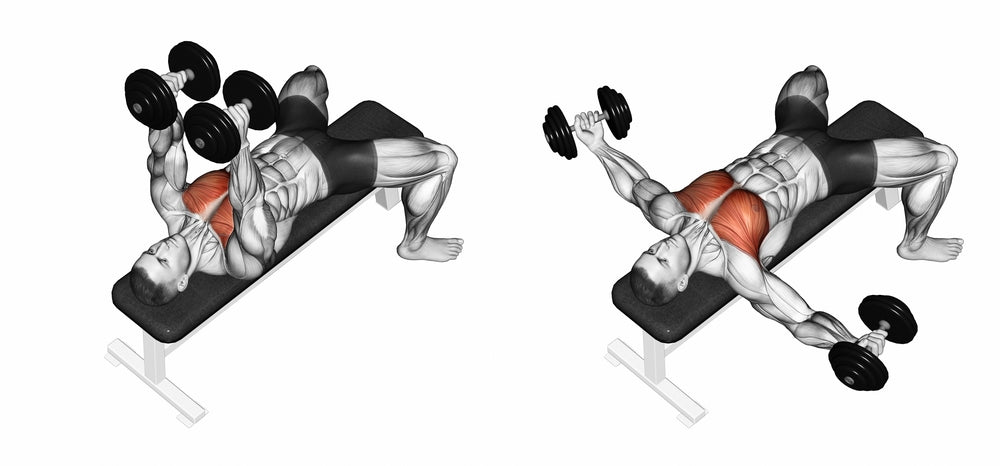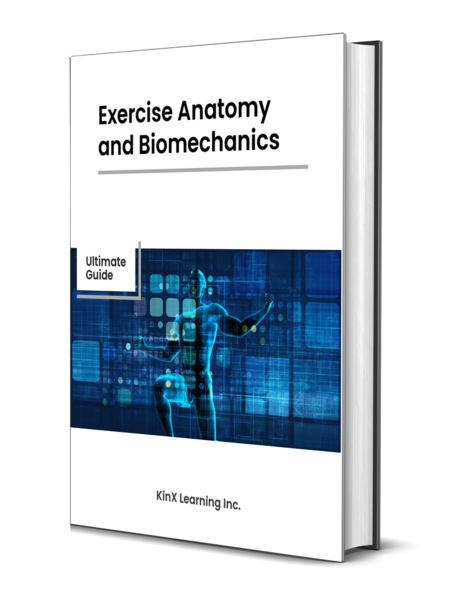Exercise Anatomy
DUMBBELL FLY (BUTTERFLY)
The Dumbbell Fly, also known as the Butterfly, is a potent exercise for targeting the chest muscles. This movement, resembling a butterfly's wings, provides a unique stretch and contraction to the pectoral muscles. Incorporate Dumbbell Fly into your chest workout for a well-rounded approach to building strength and definition in the chest.

Major Muscles and Actions Involved
The Dumbbell Fly, commonly referred to as the Butterfly, primarily involves the joint action of shoulder horizontal adduction. This movement requires bringing the arms from an outward position to the center of the body. The exercise primarily targets the pectoralis major muscles, emphasizing the stretch and contraction of the chest. Additionally, the anterior deltoids and serratus anterior contribute to the dynamic movement, supporting stability during the exercise. The Dumbbell Fly is a key isolation exercise for building and defining the chest muscles.

Sports Uses
he Dumbbell Fly, often known as the Butterfly, offers direct benefits for athletes involved in sports that demand upper body strength, particularly in the chest region. Athletes participating in sports like football, where forceful chest movements are essential for blocking and tackling, can benefit from this exercise. Additionally, individuals engaged in activities like boxing or martial arts, where chest strength contributes to punching power, may find the Dumbbell Fly valuable. Incorporating this exercise into training routines can enhance chest aesthetics, promote muscle balance, and contribute to improved performance in activities requiring upper body strength and power.
Exercise Tips
- Technique:
Ensure a controlled and smooth motion throughout the exercise, focusing on the chest muscles. Avoid using momentum or jerky movements to lift the dumbbells. Keep a slight bend in your elbows to maintain tension on the chest. - Range of Motion:
Prioritize a full range of motion to maximize the stretch and contraction of the chest muscles. Lower the dumbbells until your arms are parallel to the ground or slightly below, feeling a comfortable stretch in your chest. Lift the dumbbells back up in a wide, arcing motion. - Amount of Weight Used:
Start with a moderate weight that allows you to perform 10-12 repetitions with proper form. Gradually increase the weight as your strength improves. Using excessively heavy weights can compromise your form and increase the risk of injury. - Grip:
Hold the dumbbells with a neutral grip (palms facing each other) to target the chest effectively. Keep a firm grip on the dumbbells throughout the exercise to maintain control. Avoid over-gripping, as it may lead to unnecessary tension in your forearms. - Variations and Breathing:
Experiment with different variations, such as incline or decline dumbbell flyes, to target different areas of the chest. Focus on controlled breathing—inhale as you lower the dumbbells and exhale as you lift them. This controlled breathing helps stabilize your core and enhances overall performance.

Want to Learn More?
Try our premium ebook, Exercise Anatomy and Biomechanics: Ultimate Guide.
Satisfaction guaranteed.
